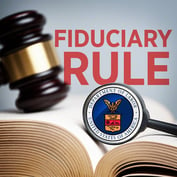Investors who need yield—and there are many of them, from retirees to the young and risk-averse—have not had an easy time over the past couple of years, as interest rates fell to historic lows, only to drop even lower. The Federal Reserve’s low interest rate policy, slated to last until 2014, according to Fed chief Ben Bernanke, means that investors will get no relief through traditional avenues such as money market accounts, certificates of deposit and short-term Treasuries.
So what’s an income-seeker to do, beyond accepting less income? Many investors have turned to riskier assets, starting with longer-term Treasuries and corporate bonds and then slowly, gingerly moving down the quality ladder.
Last year, net inflows into bond funds and bond exchange-traded funds (ETFs) totaled $261 billion, according to Morningstar, as investors increasingly turned to bonds to help augment the income generated by their portfolios. A bond-focused strategy can create higher levels of income but can also add interest-rate and other risks.
More income, less risk?
One time-honored way to mitigate risk is through diversification, which works for income as well as growth. In the great search for yield, Envestnet|PMC uncovered some sectors of the markets where you might not expect to find good sources of income. We searched the ETF universe for strategies that were yielding more than 5% (using the previous 12-month yield) and found high-yielding examples in 23 out of the 88 different ETF categories (results were similar when examining mutual fund categories). While the usual suspects—high-yield bonds, preferred and emerging market debt—were in the mix, there were some surprises in both equity and alternative categories.








 June 26, 2012 at 08:00 PM
June 26, 2012 at 08:00 PM











